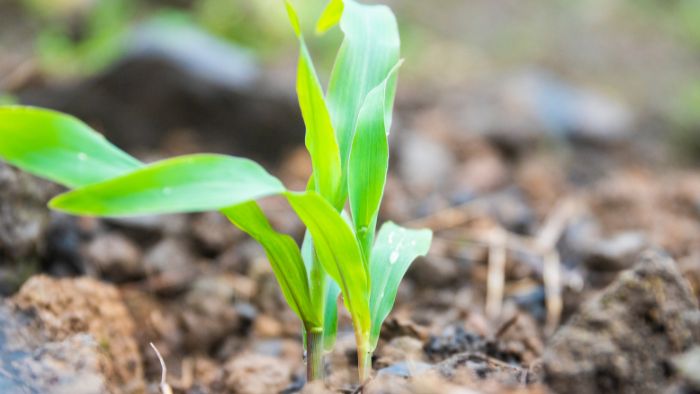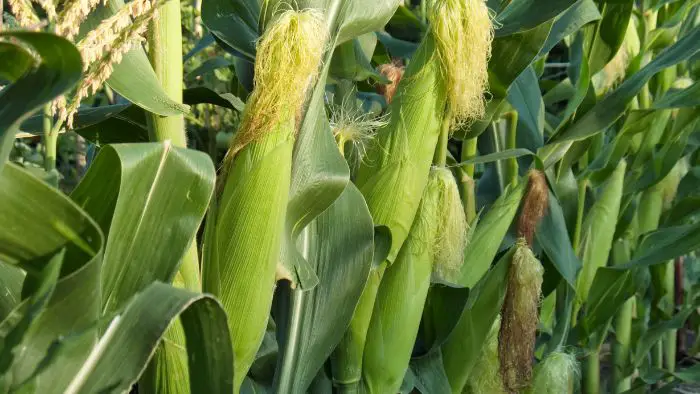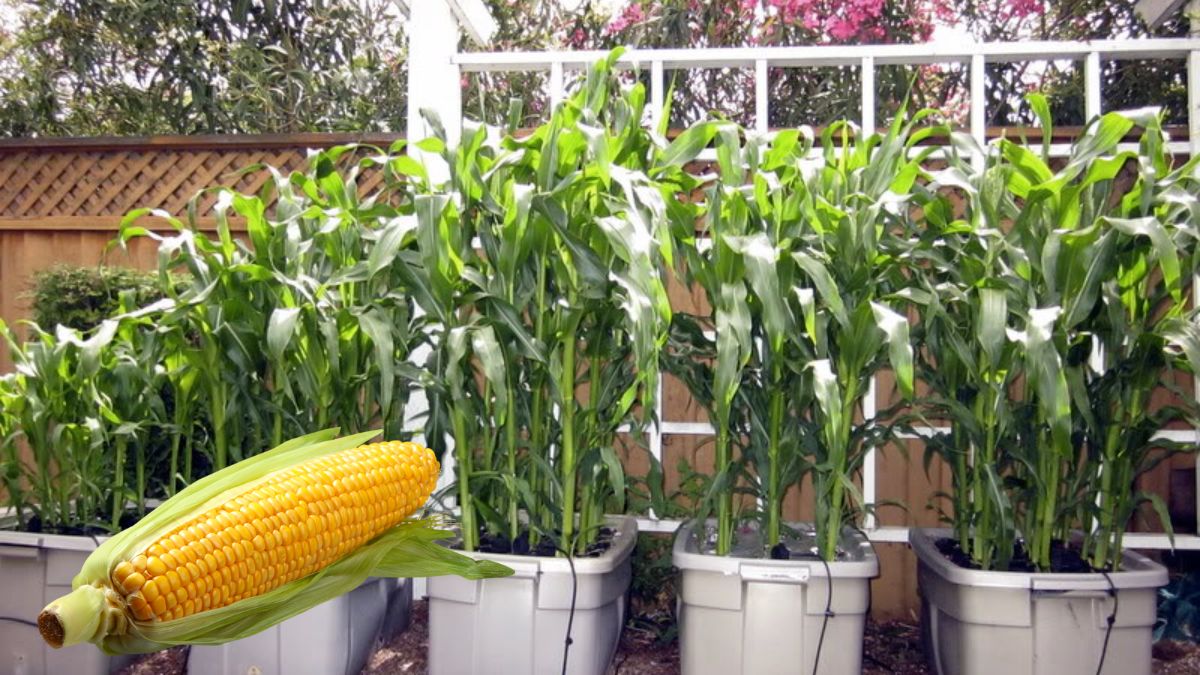For those of us without a large balcony or yard, there are many ways to learn how to grow corn in a pot! I figured out how to grow corn in a large container inside of my apartment through trial and error. Corn is a great vegetable to grow and actually grows really quickly!
It is a great vegetable or stalk to grow if you have children. Every day the plant looks different, but you will need to help fertilize the plant since growing more than one or two in a pot is difficult. Even for the most beginner gardener, this is a great way to grow corn in a pot in only just 6 quick steps!
Contents
Fun Facts About Corn
Corn is a wonderful grain that is often eaten with heavy meats or made into a fine powder for tortillas and bread. There are hundreds of different varieties of corn, and interestingly some are not edible! Corn is native to the Americas, specifically North America and South America and was harvested for thousands of years by Native Americans.
Not all corn looks the same, but usually the average corn has about 16 rows of 800 kernels that range in sweetness. When corn does not grow well, the kernels are different sizes, shapes, and are hard to eat. Another fun fact about corn is the largest stalk of corn was more than 35 feet tall! Does this inspire you to grow corn in a pot?
How To Grow Corn In A Pot?
Listed below are six quick and easy to follow steps on how to grow corn in a pot. It does not take long and in only three to four months you can have multiple stalks of corn to enjoy!
Step 1: Find the Perfect Seed and Container
First, when you are learning how to grow corn in a pot, you need to start by searching for your desired variety. There are thousands of different types of corn and all seeds are different. For example, if you need something for a container that also doesn’t grow too large, I recommend finding a small or ‘mini’ variety.
Your container needs to be large, holding at least 12 gallons of soil! While you may get away with starting in a small container for mini varieties, these plants are finicky with long and deep roots. They do not like being moved and transplanted regularly.

Step 2: Germinate the Seed
Technically, you can germinate the seed in your pot directly. Personally, I like to make sure the seeds work by germinating them outside of the dirt. Get a paper towel and wet it. Put one to three corn seeds in the wet paper towel and place it in a ziplock bag.
Close the bag, but allow a small amount of air by poking a little hole with a needle or pet. This acts like a greenhouse and increases humidity which will activate the seed to root. In less than a week, you should see furry roots emerging from the open corn seed. Discard the ones that do not root or open.
Step 3: Water Generously

Place your seed in the container, as it starts to grow it will need a lot of water. You should wait for the corn plant to thicken and grow up to a foot before watering generously. It will need a lot of water after it grows past the seedling stage and continues climbing up.
Once your corn stalk has a piece of corn growing kernels, you will need to water at least once every day or two. During this stage the plant uses a lot of energy to grow the kernels. Hydration is important!
Read more about How To Grow Oak Saplings: 5 Tips And Tricks
Step 4: Expose the Corn Plant to Sunlight
Since corn is a plant, it does make its own food and energy through photosynthesis, meaning it needs plenty of sunlight. However, too much sunlight can also burn the leaves and wilt your corn. Only grow corn when the outside temperature is 60 degrees Fahrenheit to 91 degrees. If it is any hotter or cooler, the growth will be stunted or it won’t germinate at all.
Step 5: Fertilize your Corn
Fertilizer isn’t always necessary, but it helps increase the rate at which your corn plant grows. Corn needs a lot of nitrogen, potassium, and phosphorite. However, if you add too much food to your plant’s soil, it will become overwhelmed and die. If you are unsure what to feed your plant’s soil, you can always test it!
Step 6: Harvest and Enjoy!
Possibly the best part about growing your own food is that you can harvest the finished product. Harvesting corn is super easy, all you need to do is wait for it to be bloated and ready. The kernels should be soft and plump. To take out the ear of corn, grab the corn, twist, and pull.
Tips And Tricks For Growing Plants In Containers
While direct sunlight is the best option for lighting when you are growing anything in a container, you can also purchase grow lights. For example, I used to live in an apartment without a balcony and could not grow anything that wasn’t by the window. However, the window was blocked and shaded by a large tree so I used grow lights and programmed them to turn of and off to mimic the sun’s schedule.
Conclusion
What do you think about our method to grow corn in a pot? Containers are great options for those of us that do not have a lot of space. Corn, though, requires a lot of space and attention. It is necessary to purchase a large container with holes at the bottom.
When you get a chance, purchase or harvest your favorite type of corn’s seeds and plant it in a container! This is a great way to beat any diseases and ensure your plant is safe. Do you know anyone interested in growing corn in a pot? Send them our method of growing corn in a pot.
FAQs
How deep does a corn planter need to be?
You should plant your corn in a pot at least 2-3 inches from the surface.
What happens if you plant corn too close together?
If you plant corn too close, the corn will either not grow well or it will die. If you do get corn, it will likely be small and starchy.
How deep do corn roots go?
The depth of the roots depend on how large the container is, the corn variety, and how large the plant grows. The maximum depth recorded was 60 inches.
How many ears of corn are on a stalk?
On a stalk, you can get between one to two ears of corn.
A garden is a place that relaxes us and reflects our personal style, it’s a place to spend time with loved ones and grow our own fruits and vegetables. Maybe you’re looking for design inspiration or plant selection, or you’re concerned about garden privacy, shady areas, or pests, but don’t worry, you’ve come to the right place.
